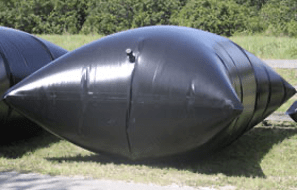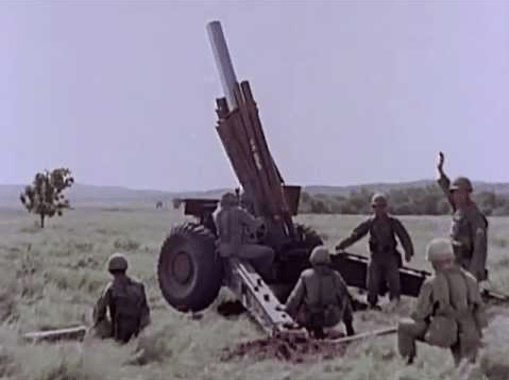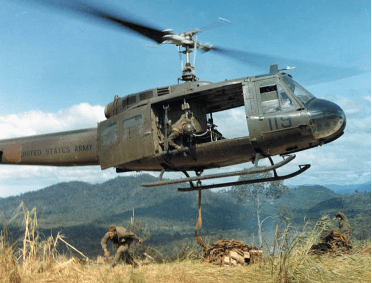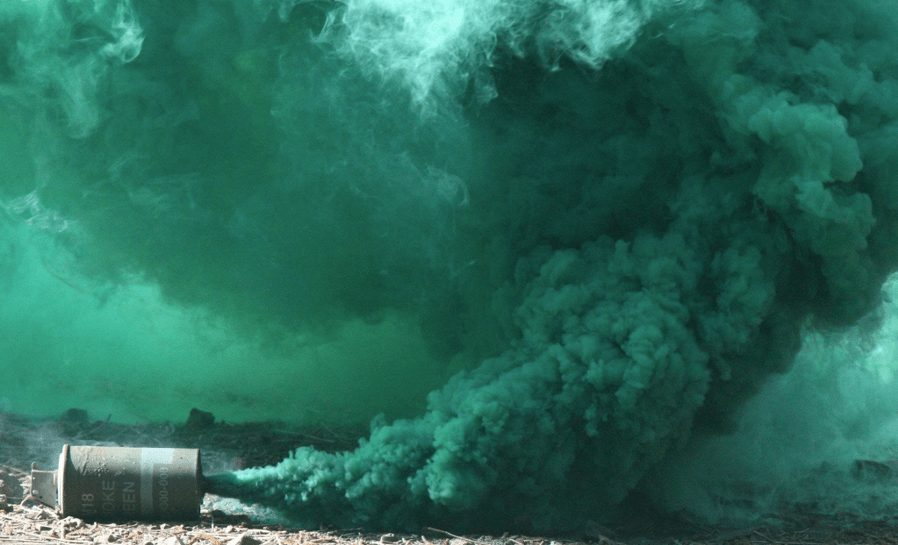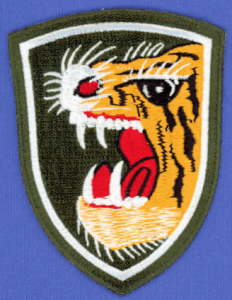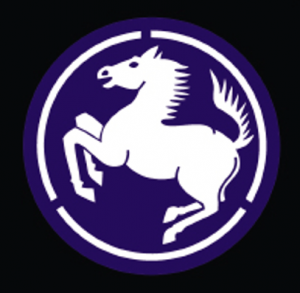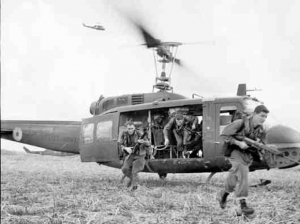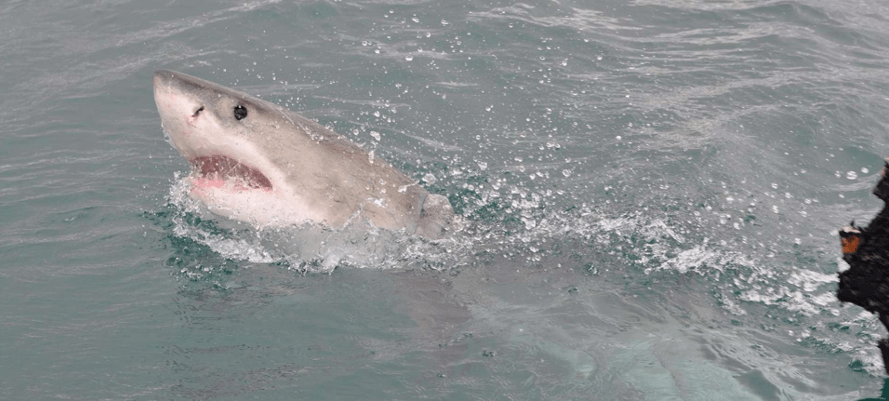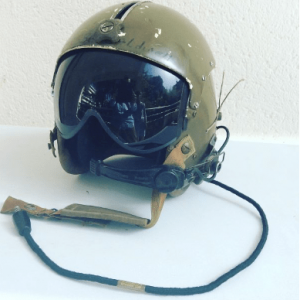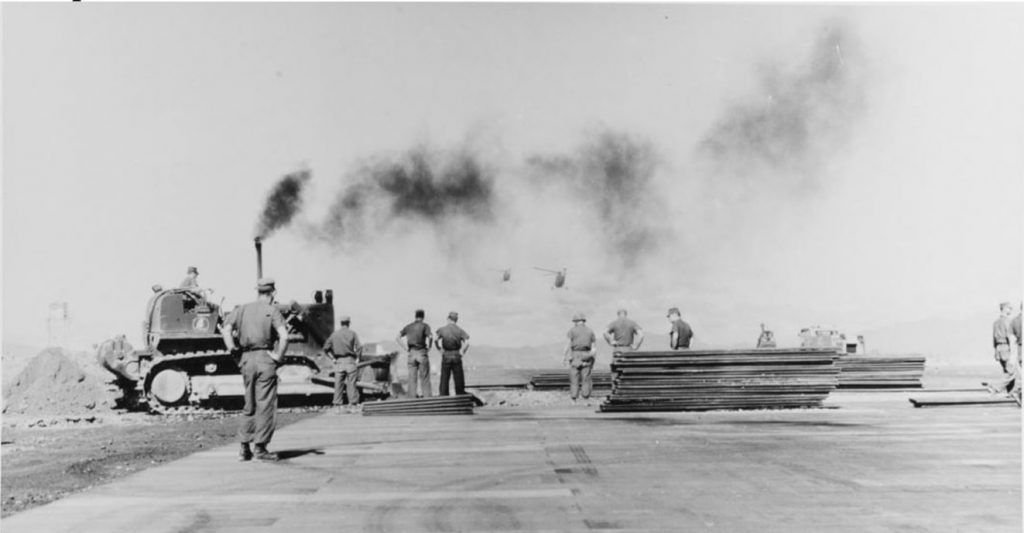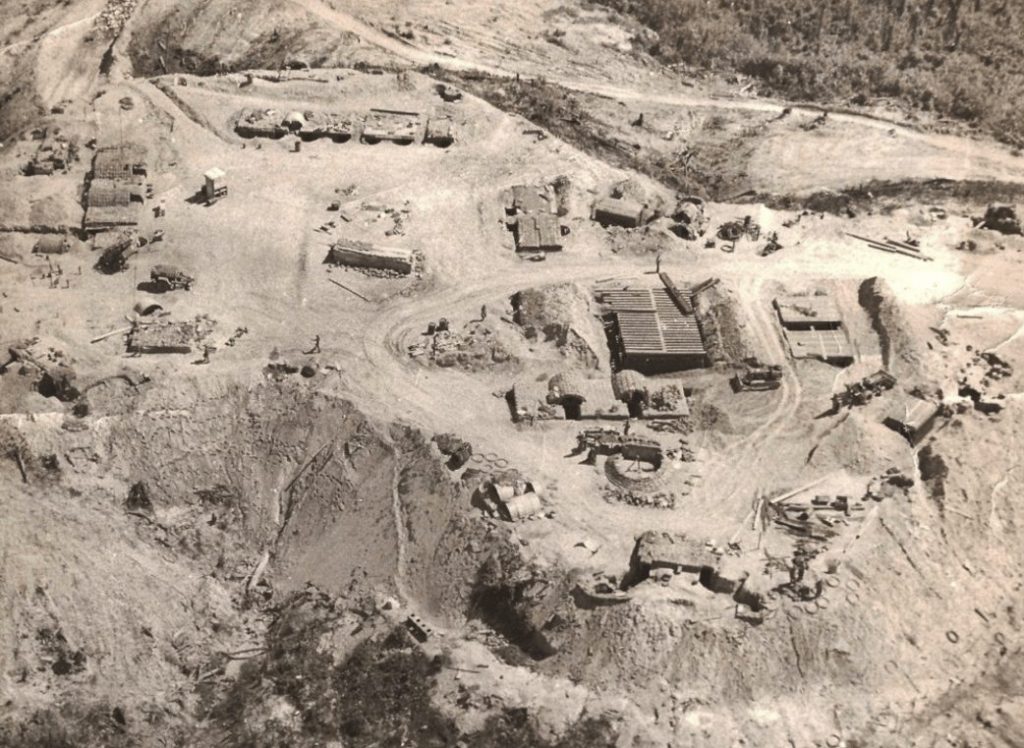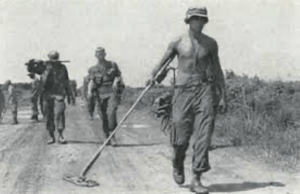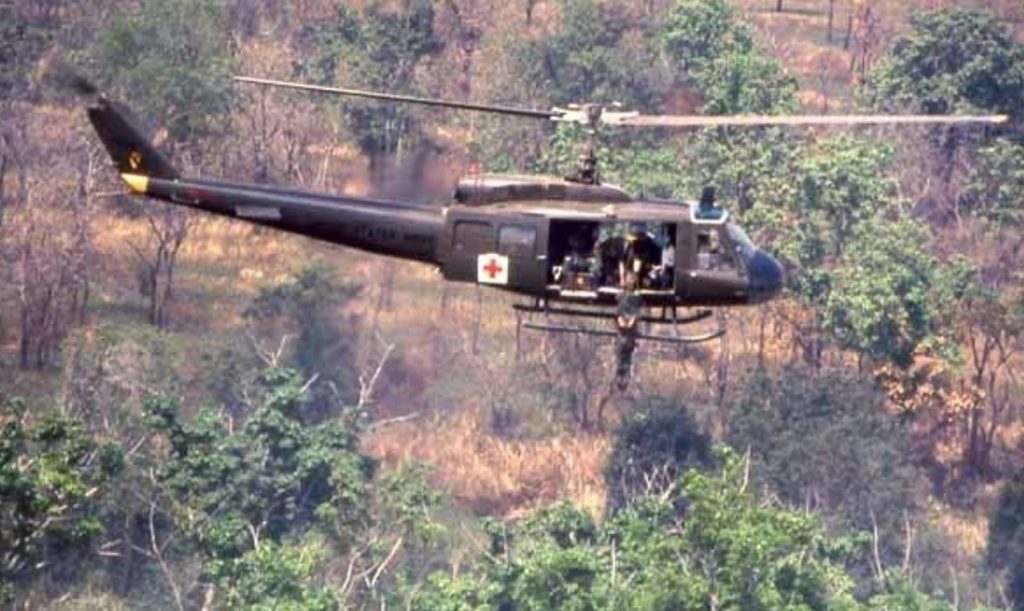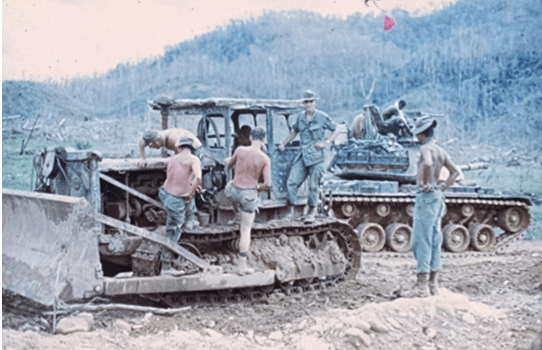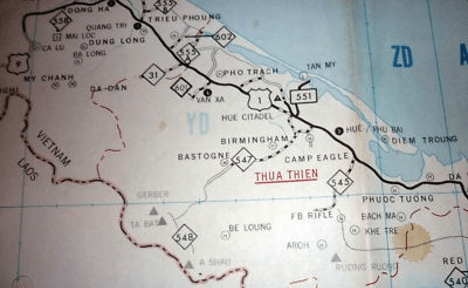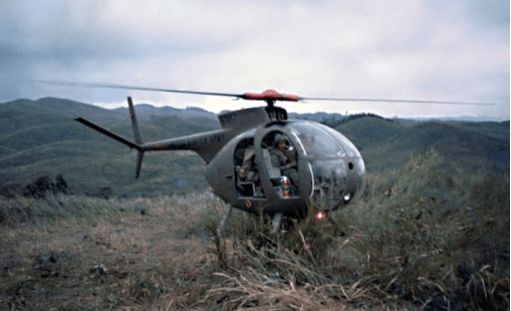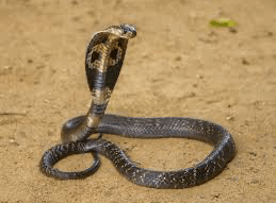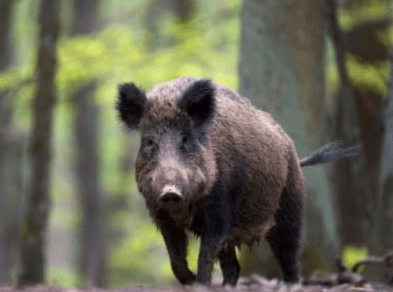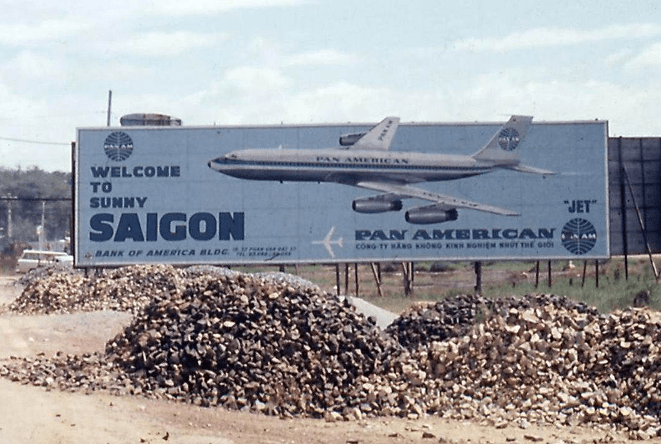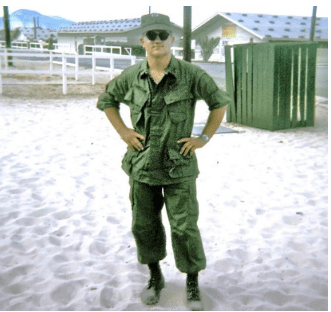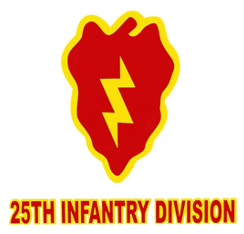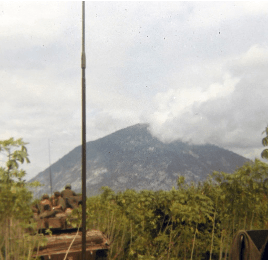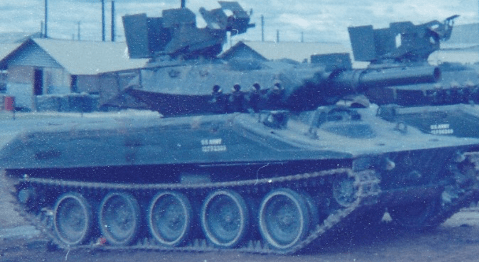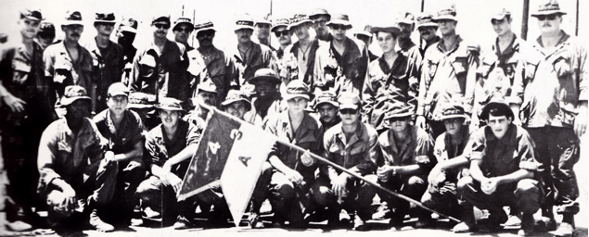Continuation of stories about flying Hueys in Vietnam during 1972. See part 1, “Smoke”.
Craziest thing I remember about “bombing” was one really windy day around March ‘72 when I was still flying co-pilot, or “charlie-pop.” One Republic of Korea White Horse Division company outpost on a mountain pinnacle east of Nha Trang was really hurting for water, so their battalion loaded a rubber blivet, or gigantic water bladder, in our bird and filled it from a “water buffalo” transport trailer.
We took off with maybe a ton of water in this rubber bag on the cabin floor trying to roll around, but it was way too turbulent for us to even try to land at the pad on the pinnacle. The Korean guide on board insisted the troops desperately needed the water, so he finally persuaded the Aircraft Commander to make a really low and slow pass so they could roll the blivet out.
So he flew us in, about six feet up, just barely in translational lift, maybe ten knots ground speed, with the bird gyrating wildly in the turbulence. When they rolled the blivet out, the sudden change in center of gravity almost caused a blade strike on the ground, but the bird lurched upward once the load was gone. That blivet hit the pinnacle pad like a one-ton water balloon, drenching about 40 ROK troops who wanted something to drink, not a shower.
We didn’t try that again.
Another mission after I became Aircraft Commander [callsign “Ghostrider 8”], we were carrying a ROK Regimental Commander out to see one of his companies on a pinnacle outpost. The company had taken a 4×8 sheet of ¾” plywood, painted it white, then in red Korean script painted “Welcome, Colonel Whatever, to 7th Company, home of the best troops in Vietnam.” The heavy plywood was nailed to a tree, but as we landed, the rotor wash ripped the nails out of the bark and it went flying up into the whirling rotor blades. BAM!!
Terrified, I was certain we had severed a rotor blade or worse, so we shut it down on the spot to inspect the damage. Miraculously, one rotor spar had hit the plywood sheet absolutely flat, slicing it diagonally as if it were cut on a saw. Along nine feet of that blade’s leading edge was a line of white paint, interspersed with flecks of red. Still shaking, I called it a day, flew the commander back to his Regimental headquarters, and returned to our airfield. When the Ghostrider maintenance section inspected the rotor blade, they pronounced it perfectly safe to fly.
That episode convinced me for certain that there was a Guardian Angel protecting us from our own stupidity. Funny, though, but that Regimental Commander never flew with us again.
(Another “Guardian Angel” story is called “Pigs and Corn.” You can read that here.)
The Guardian Angel was certainly on duty another day. Our company airfield was almost adjacent to the White Horse Division command post. Every day we had one bird assigned on stand-by for the two-star ROK commanding general, in case he wanted to go somewhere. Usually, it was a completely boring day, doing nothing but sitting around waiting. Even when the generalactually had us fly somewhere, it was a VIP flight, so we had to fly very smooth and gentle, with no maneuvering. It was usuallyto some other headquarters, so we always had a large landing pad in an open and level area. Boring!!
The layout was like a large inverted letter L, with the division headquarters at the tip of the lower bar [a couple hundred yards long]and our airfield aligned with the upright. At the end of this mind-numbing day-long mission, the only fun part was returning to the airfield. We called the maneuver a “triple-60.” The bird took off eastfrom the pad, gaining enough airspeed and altitude to cross the extended centerline of the airfield at 60 knots and 60 feet altitude, whereupon we yanked the birdover left 60º and flew a tight 270º turn to roll out south,aligned for landing on the airfield strip. That was really fun.
Unfortunately, there was a 155mm artillery battery located in the center of the loop we had to fly.
Before taking off, we always had to get clearance from the airfield control tower to fly near this end of the airfield, and in particular to be cleared for the “left 270” maneuver, since the tower had communications with the artillery battery and could ensure there would be no firing.
So late one afternoon the “command” birdgot “mission-release” and called the controltower for permission to return to the airfield. Tower replied, “Ghostrider one-four, you are cleared for left 270, landing south straight in.”
Somehow, and the investigation never got an explanation why, during the triple-60 maneuver, one of the artillery pieces fired. Miraculously, the shell shot straight through the open doors of the steeply-banked Huey, not touching a thing.
However, the sonic boom from the supersonic shell did rupture the eardrums of all four crew members, getting them grounded for several weeks.
Many people question whether there is a God, or whether angels are guarding his earthlings, but I can assure you of this:
Those who have survived a miracle such as this one, they believe!!!

